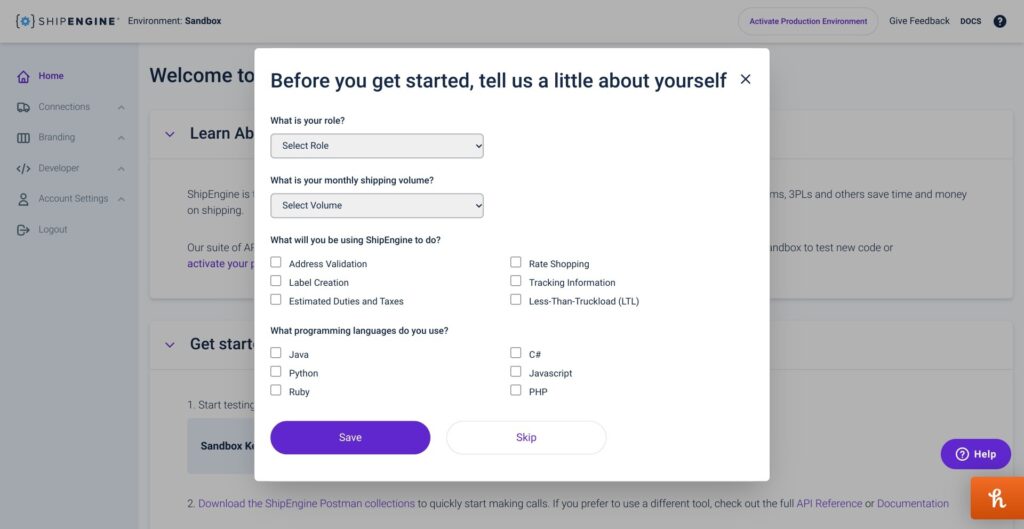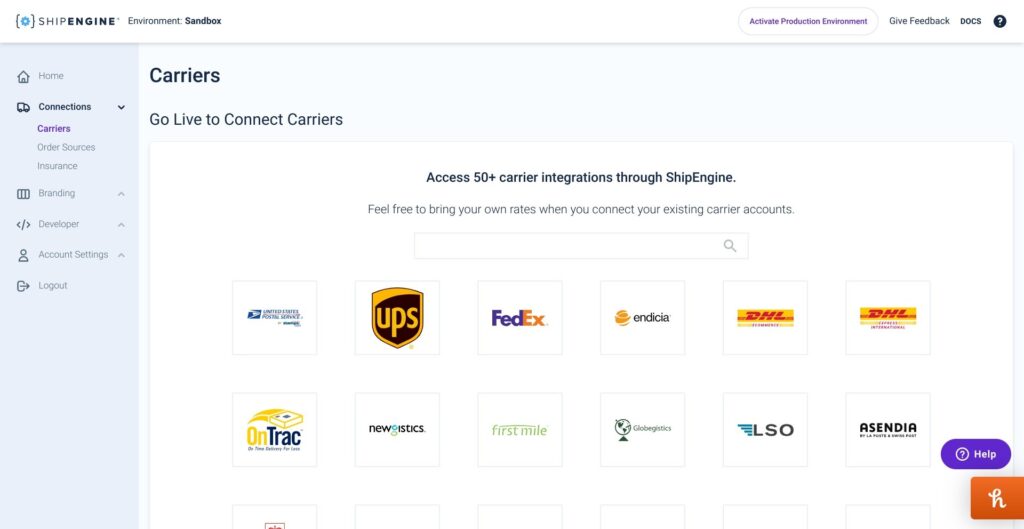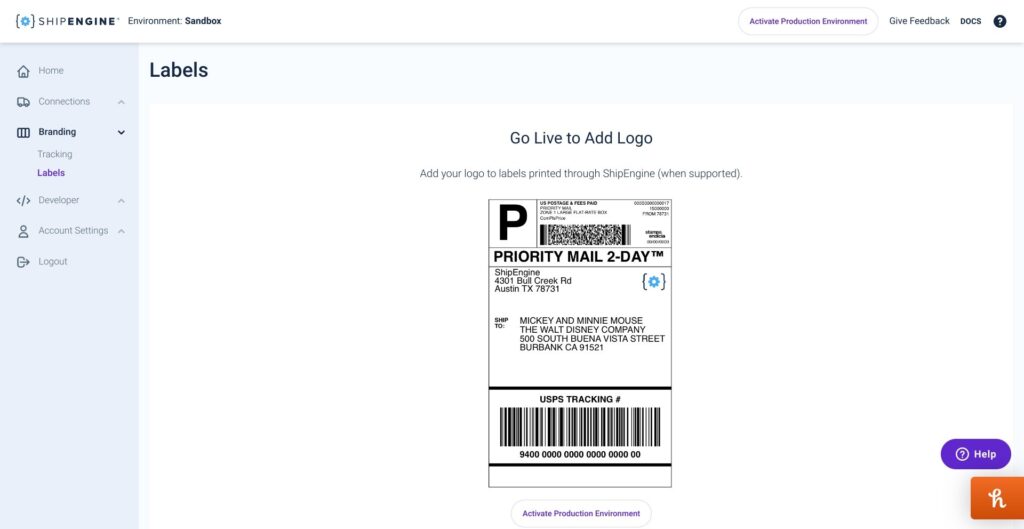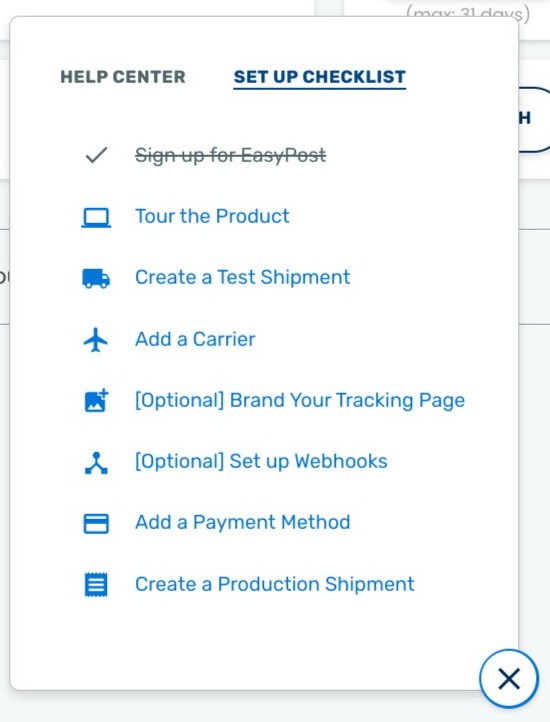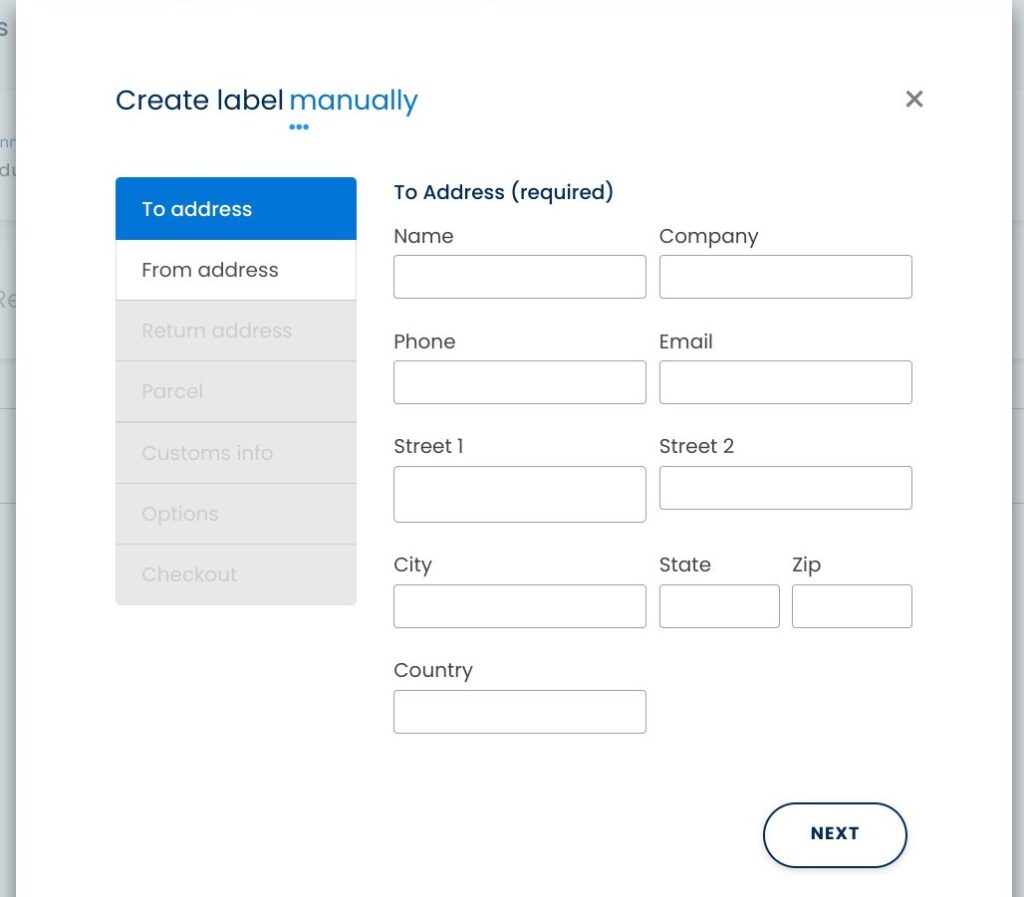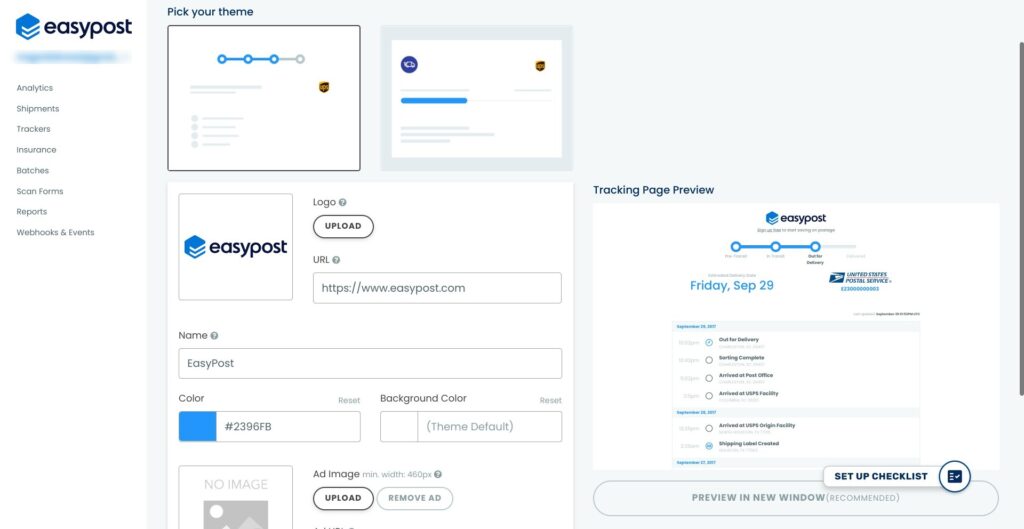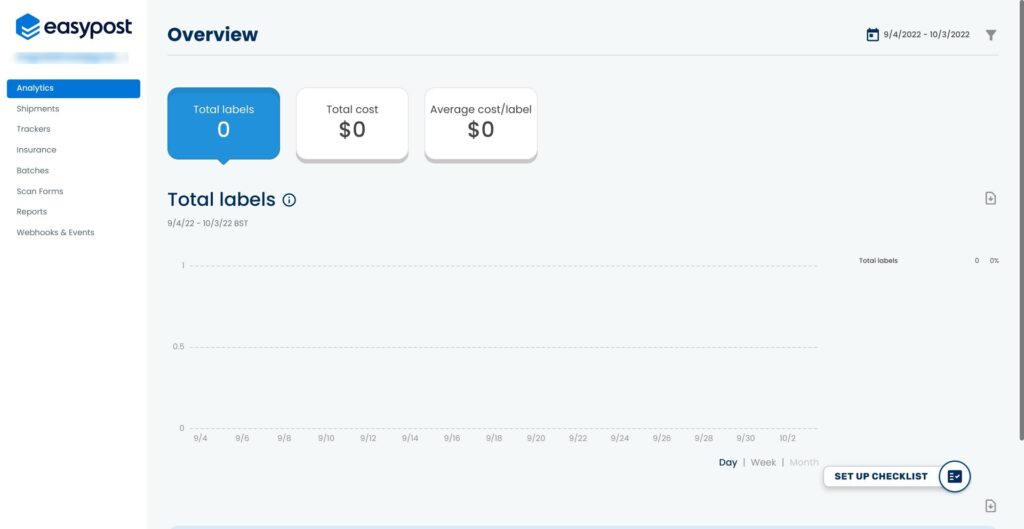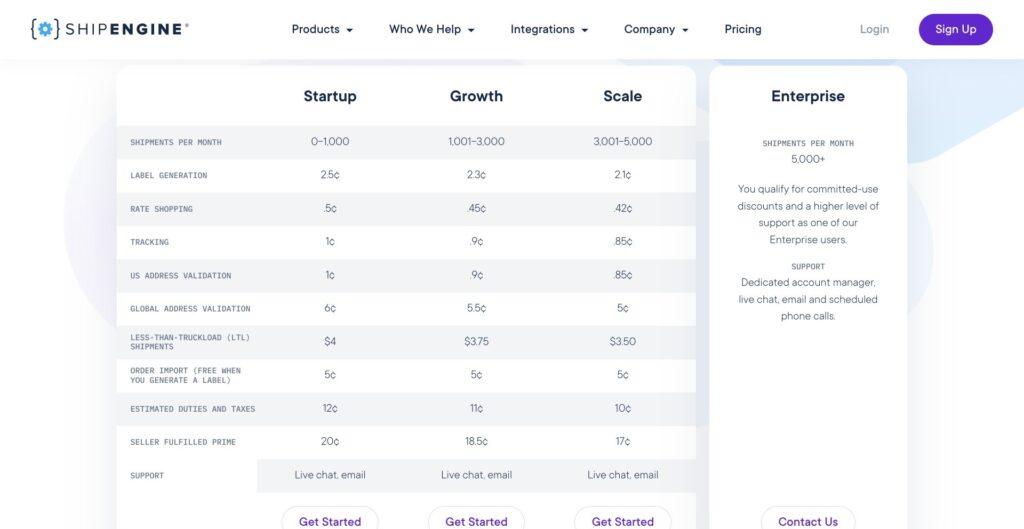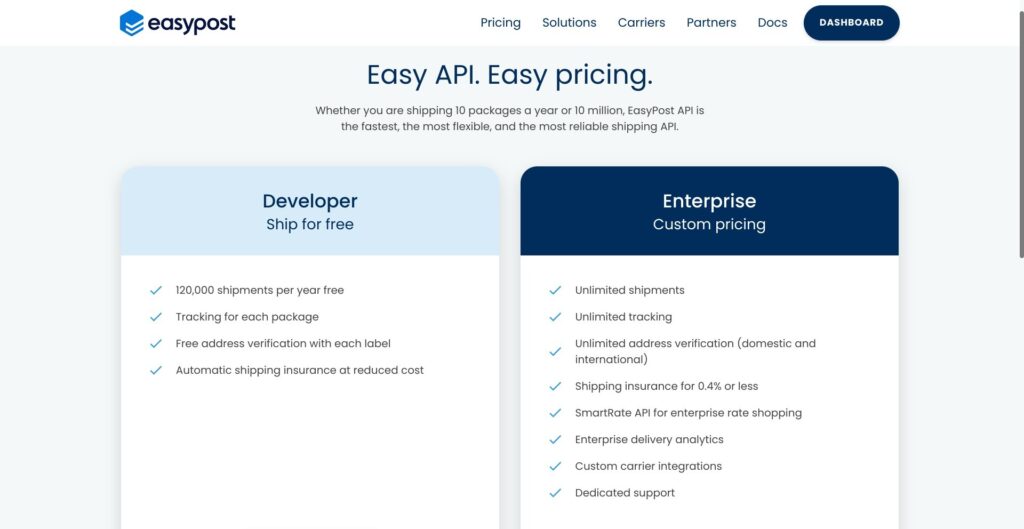- My Bottom Line Up Front
- Main Differences Between ShipEngine vs EasyPost
- What is ShipEngine?
- What is EasyPost?
- The Main Features of ShipEngine
- The Main Features of EasyPost
- ShipEngine vs EasyPost - Support
- ShipEngine vs EasyPost - Pricing
- ShipEngine
- EasyPost
- ShipEngine vs EasyPost - Pros and Cons
- ShipEngine vs EasyPost - Alternatives to Try
- FAQs
- To Sum Up …
Dealing with shipping has to be one of the biggest logistical challenges when it comes to managing an online business. Using a shipping tool can bring costs down, increase customer satisfaction, and free up time for both yourself and your team.
The question is if choosing between ShipEngine vs EasyPost, which tool is better? What services do they offer, and how can they help you to be more efficient when it comes to shipping?
I’ve made so many mistakes over the years when it comes to finding the best shipping providers: from spending way too much time finding the cheapest carrier, to having to deal with incorrect addresses, to choosing the easiest shipping option even when there were better deals out there.
A good shipping tool should help to alleviate some of these stresses. I’ve looked into the features of both ShipEngine vs EasyPost to help you to figure out if either is right for your business. Keep reading to find out which one I liked best, as well as a more in-depth comparison of each platform!
My Bottom Line Up Front
My bottom line up front is this: if you’re using an eCommerce platform, you will want to go with ShipEngine. It’s easier to navigate, it’s fairly simple to connect your eCommerce service, and the price structure is very clear. However, if you have developers on your team, you may prefer the flexibility and the in-depth analytics offered by EasyPost.
ShipEngine is the platform of choice for world-class shipping and logistics. Global commerce leaders trust the #1 shipping API to unlock significant time and cost savings.
Main Differences Between ShipEngine vs EasyPost
The main differences between ShipEngine vs Easy Post are:
- ShipEngine integrates with several eCommerce platforms, whereas EasyPost doesn’t
- ShipEngine can be learned by anyone with time and patience, whereas EasyPost needs more developer experience
- ShipEngine doesn’t offer built-in carbon offsetting, whereas EasyPost does
- ShipEngine allows address verification from over 160 countries and territories, whereas EasyPost offers verification from over 240 countries and territories
- ShipEngine’s pricing structure is clear, whereas EasyPost’s pricing is a little less clear
What is ShipEngine?
ShipEngine offers a shipping API to make everything related to shipping (choosing a carrier, cross-border shipping, branding, and insurance) easier. There are several integrations with eCommerce platforms, including Magento, Shopify, and WooCommerce.
I’d recommend ShipEngine for any sized business with some developer experience, or at least, some time to learn how to link the service to their eCommerce platform.
What is EasyPost?
EasyPost is a shipping API designed for developers wanting to create a shipping experience that works for them. They partner with many carriers across the globe. I’d recommend EasyPost for any sized business with developers on their team.
The Main Features of ShipEngine
Let’s take a look at what ShipEngine has to offer.
UX
You don’t need to enter any payment information to sign up to ShipEngine, and it’s pretty easy to get going:
I like ShipEngine’s interface. It’s clean, bright, and easy to navigate.
Shipping
Now, let’s dig into ShipEngine’s shipping features. Using their shipping API, you can print shipping labels, shop around for decent rates, validate addresses, and track packages.
Compatible carriers include:
- DHL
- TNT
- Yodel
- UPS
- FedEx
- Royal Mail
- DPD
- Parcelforce
- USPS
I like that you can pick the best carrier for each shipment. This level of customization makes it easier to choose the most convenient option for you and your customers.
The real-time tracking and delivery notifications are great, too. You’ll be able to see the status of your orders, and customers will also receive automatic updates on when to expect deliveries (without needing to do it using your email marketing provider).
The real-time shipping API is capable of giving real-time updates on the location of each package, meaning there are fewer chances of losing them on the journey. You can ship from multiple warehouse locations, which is helpful if your stock is stored in more than one place.
You can also use their shipment insurance, Shipsurance, to cover high-value items. It’s nice to have this service under one platform. The downside is that it doesn’t offer recurring order automation, which some other shipping companies provide (for example, Shippo and Shipworks provide this). It’s also not compatible with dropshipping at the time of writing.
Address validation is easy to do with ShipEngine. You can easily verify addresses from over 160 countries, which is great.
Cross-Border Shipping
I like the cross-border shipping options available. This is a little more complex. ShipEngine generates harmonized tariff codes for each product, calculates total costs (that’s postage plus all the taxes and surcharges depending on the country you’re shipping to), and prints international shipping labels.
Branding
Branding is important in terms of building customer familiarity and loyalty, and ShipEngine allows you to add logos, brand colors, social media links, contact information, and your return policies. You can then add these elements to your invoices, labels, and so on.
eCommerce Integrations
ShipEngine has the following eCommerce shipping API integrations:
- 3D Cart
- Etsy
- Magento
- Shopify
- Squarespace
- WooCommerce
For example with Shopify, you can use their services together (i.e. within Shopify’s platform) or separately, and you’ll be able to import orders, calculate shipping rates, print labels, and track packages without any hassle. (As a side note, if you are using Shopify, you might find our Best Shipping Apps for Shopify article helpful.)
ShipEngine is the platform of choice for world-class shipping and logistics. Global commerce leaders trust the #1 shipping API to unlock significant time and cost savings.
The Main Features of EasyPost
Now let’s see how EasyPost compares.
UX
It’s easy to get going with EasyPost, and I like that they make it easy for new users. You can follow their checklist after signing up to get started:
It’s really easy to navigate, too. It’s a simple, clean, bright interface that feels pleasant to spend time using.
Shipping
Shipping is easy with EasyPost. You can manually create labels, automatically generate labels, track packages, update customers on the status of their deliveries, and more.
Carriers include:
- USPS
- UPS
- FedEx
- DHL Express
- DPD
- Parcelforce
There are plenty of other options to choose from, too (over 100 altogether).
I like that you can manually create shipping labels:
This is easy to do, and you can set up some processes to run automatically (for example, you can set up notifications for all package movements, so you’ll always know where they are). Plus, you can set up similar notifications for customers, so they’ll know when to expect their packages.
I also like the fact that you can easily insure purchases without having to leave the platform. The address verification system is good. Their address verification API is good, and it’s included for free with each label purchase. They accurately verify addresses in over 240 countries and territories, too.
Like ShipEngine, EasyPost is not compatible with dropshipping unless you want to use one of their partners, Order Fulfilment Guru.
Carbon Offsetting
I also appreciate the ability to offset carbon emissions. The larger your business grows, the more impact it will have on the planet.
You can use their API to offset carbon emissions on every single shipment. You can add a carbon-neutral shipping option for customers to choose from, use accredited carbon removal developers, and choose from several grassroots carbon offset programs.
This is a good example of how technology can be used for good, and as a business owner, I appreciate having the option.
Branding
It’s very simple to set up branding on EasyPost:
You can set up a theme for tracking pages, upload logos, change your business name, choose colors, and more. I love how simple this is to set up, and it’s easy to make your tracking page branding match the design of your website and similar.
eCommerce Integrations
EasyPost doesn’t have as many integrations as ShipEngine when it comes to eCommerce. It’s focused more on helping those with developer experience set up a shipping system that works for them.
Analytics
One core advantage of EasyPost is the analytics. You can easily view your dashboard, with total labels, total cost, and the average cost per label:
I like how easy this is, and the fact that you can run custom reports (for example, you can run a report on the number of refunds issued within a certain time frame). I like the reporting available in EasyPost – it makes managing your accounting much easier! (You can check out our guide on how to find the best accounting software for more ideas on this.)
ShipEngine vs EasyPost – Support
Let’s check out how they compare in terms of customer support.
ShipEngine
I like ShipEngine’s tutorials. Dealing with the technical stuff can be confusing, but I think that ShipEngine makes it as simple to understand as it can. Each process has a detailed, step-by-step guide, which is great. Support is available via a ticketing system, and if you have an account, live chat and email support. They’re pretty quick to respond, too.
EasyPost
On the face of it, I don’t like EasyPost’s knowledge base as much as I like ShipEngine’s. They do have some good ‘Getting Started’ guides, but they don’t offer as much help as ShipEngine in this regard.
You can ask for support using a ticketing system.
ShipEngine vs EasyPost – Pricing
Now let’s take a look at pricing!
ShipEngine
There are 4 pricing plans available on ShipEngine:
Startup
- Shipments Per Month: 0-1000
- Label Generation: 2.5¢
- Rate Shopping. .5¢
- Tracking: 1¢
- US Address Validation: 1¢
- Global Address Validation: 6¢
- Less-Than-Truckload Shipments: $4
- Order Import: 5¢
- Estimated Duties and Taxes: 12¢
- Seller Fulfilled Prime: 20¢
Growth
- Shipments Per Month: 1001-3000
- Label Generation: 2.3¢
- Rate Shopping. .45¢
- Tracking: .9¢
- US Address Validation: .9¢
- Global Address Validation: 5.5¢
- Less-Than-Truckload Shipments: $3.75
- Order Import: 5¢
- Estimated Duties and Taxes: 11¢
- Seller Fulfilled Prime: 18.5¢
Scale
- Shipments Per Month: 3001-5000
- Label Generation: 2.1¢
- Rate Shopping. .42¢
- Tracking: .85¢
- US Address Validation: .85¢
- Global Address Validation: 5¢
- Less-Than-Truckload Shipments: $3.50
- Order Import: 5¢
- Estimated Duties and Taxes: 10¢
- Seller Fulfilled Prime: 17¢
ShipEngine is the platform of choice for world-class shipping and logistics. Global commerce leaders trust the #1 shipping API to unlock significant time and cost savings.
Enterprise
Enterprise is the plan to go for if you want to ship more than 5000 packages a month. It offers high levels of support, including a dedicated account manager.
I think that ShipEngine’s pricing is fairly similar to other platforms. You can find out more on their pricing page.
EasyPost
There are 2 plans to choose from:
Developer
- 100,000 shipments per year free
- Tracking for each package
- Free address verification for each label
- Automatic shipping insurance at a reduced cost
Enterprise
- Unlimited shipments
- Unlimited tracking
- Unlimited address verification (domestic and international)
- Shipping insurance for 0.4% or less
- SmartRate API for enterprise rate shopping
- Custom carrier integrations
- Dedicated support
It’s hard to compare the costs here. On the Developer plan, the first 100,000 shipments per year are free (as in, EasyPost won’t charge you on top of the cost of the carrier you choose). After that, they charge 5 cents per label. You can find out more on their pricing page.
ShipEngine vs EasyPost – Pros and Cons
If you’re still struggling to decide, here are the pros and cons of both:
ShipEngine Pros
- Fairly easy to integrate with eCommerce platforms
- Good address verification
- Allows selling across the globe with many shipping providers
- Clear pricing structure
ShipEngine Cons
- No recurring order automation
- Not compatible with dropshipping
EasyPost Pros
- Easy to navigate platform
- Customizable
- Great address verification
- Carbon-offset API available
EasyPost Cons
- Hard to compare pricing to other, similar services
- Not compatible with dropshipping unless you partner with another service
ShipEngine vs EasyPost – Alternatives to Try
Let’s check out some alternatives to ShipEngine and EasyPost:
- Shippo– Shippo is a service focused on those using eCommerce platforms. It makes the process of dealing with shipping much easier and is pretty user-friendly. You can read more about it in our Shippo vs EasyPost comparison.
- ShipStation – ShipStation is a popular platform offering some excellent tools including automated services and discounted shipping (both domestically and internationally). You can find out more in our Shippo vs ShipStation comparison.
- Stamps.com – Stamps.com is another popular service designed to make sending letters and packages simple. It has a downloadable PC app, but only integrates with USPS. You can find out more in our Shippo vs Stamps.com comparison.
FAQs
Question: Why is address validation important?
Secondly, it saves you money on having to resend packages, and it saves you time, too. Both ShipEngine and EasyPost use address verification, automatically checking addresses to see if they are valid before sending them out.
Question: Does ShipEngine or EasyPost have mobile apps?
Question: Why should I use a service like ShipEngine or EasyPost?
Plus, using a service like this gives you access to analytics. It also makes it way easier to track your packages no matter where they are in the world.
Question: What does API mean?
To Sum Up …
I’d say that ShipEngine has the advantage here in terms of ease of use. For many people selling online, they’ll want something that easily links to their chosen eCommerce platform. It’s a little easier to navigate, too, and I like that the pricing structure is clear. Sometimes keeping it simple is best, especially if you have a small team or no developer experience.
Having said that, EasyPost is great for developers. It has some excellent tools, including great analytics, customization, and carbon offsetting API. It’s worth checking out if you have a developer on your team and you want something that you can customize to suit the needs of your business.
I hope this has helped you to figure out which one is right for you!
ShipEngine is the platform of choice for world-class shipping and logistics. Global commerce leaders trust the #1 shipping API to unlock significant time and cost savings.


